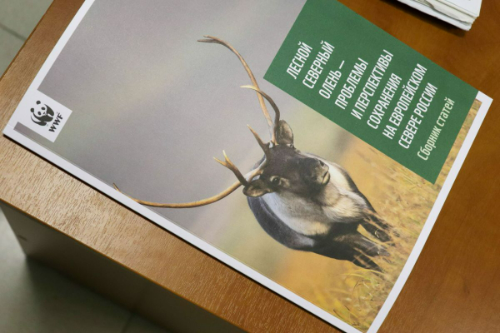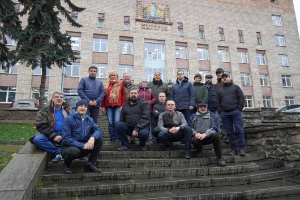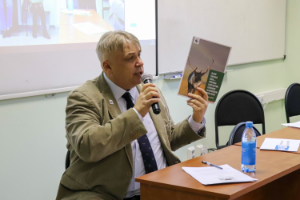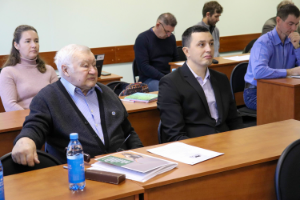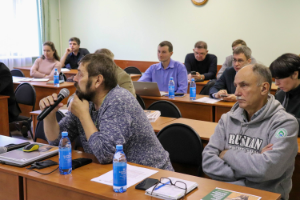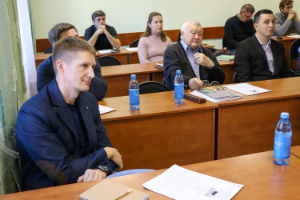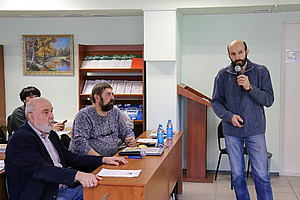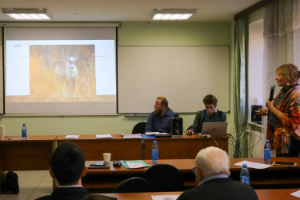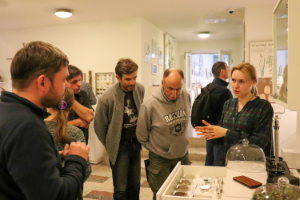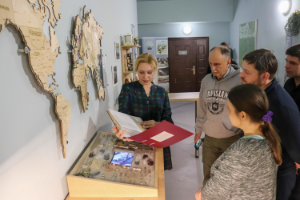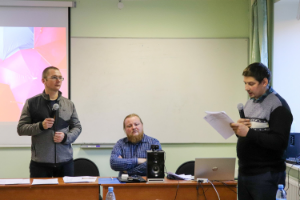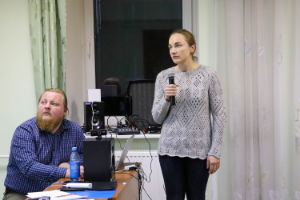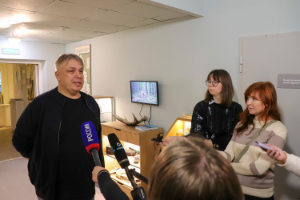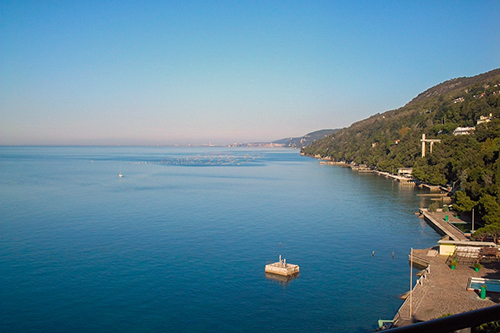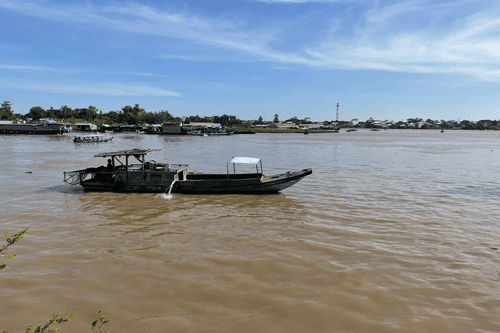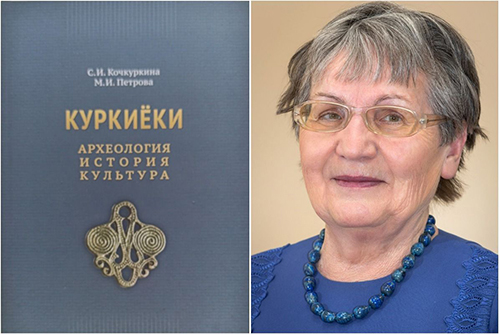The participants of the working meeting were greeted by Director of the Institute of Biology KarRC RAS Viktor Ilyukha.
“How should red-listed species be protected? I believe the reindeer case is the right thing to do, protecting the environment. Without it, protecting the animals is useless. One of the animals in reindeer’s environment is humans. I often have to sign papers from investigative authorities, saying that reindeer remains have been found in places that can only be reached by expensive vehicles. It is not yet fixed in people’s mind that we must safeguard this species”, - he said, outlining one of the problems.
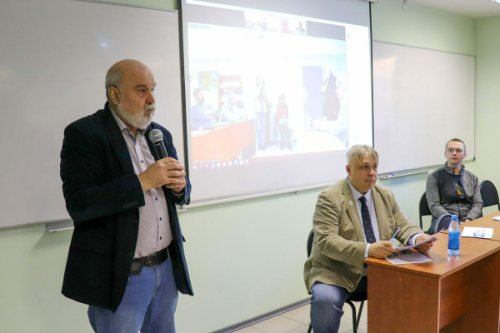
Director of the Institute of Biology KarRC RAS Viktor Ilyukha speaking
Viktor Ilyukha thanked the gathering for the efforts they invest in reindeer studies and conservation, which is often rather strenuous physically.
"It is not only the scientific community that can conserve wild reindeer. As experience shows, the efforts are especially effective when the local community is involved. When volunteers assist experts and inspectors, all problems in such areas are solved much more efficiently. We have such examples in the Murmansk Region, and we continue this work thanks to support from people who care", - said Oleg Sutkaitis, Director of WWF Barents Ecoregional Office.
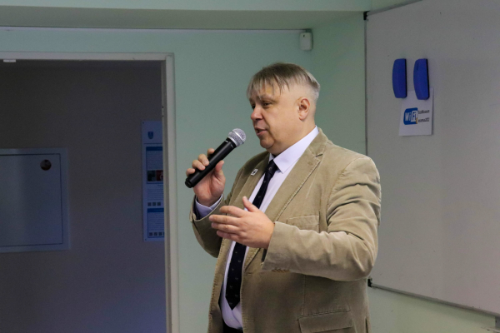
Oleg Sutkaitis, Director of WWF Barents Ecoregional Office
Wild Reindeer is listed in the Red Data Book of Russia. The forest reindeer is red-listed in Karelia as an endangered or threatened species. Although the law prohibits its hunting, the population keeps declining. For example, 15 illegally taken reindeer were reported in the Kemsky District of Karelia in March and April this year. This is only what we managed to detect in one area.
"Judging by forecasts based on the number of calves, there is, of course, a potential for growth in the reindeer sub-population. If this potential exceeds the losses caused by various anthropogenic factors, the population will grow. Our task now is to find ways to implement the conservation measures that we are proposing", - commented Danila Panchenko, Senior Researcher at Zoology Laboratory of the Institute of Biology KarRC RAS, Leader of the Theriological Society’s Reindeer Taskforce under the Russian Academy of Sciences.
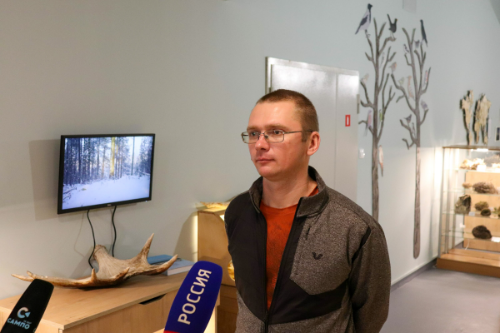
Danila Panchenko, Senior Researcher at Zoology Laboratory, Institute of Biology KarRC RAS
During the working meeting, experts discussed the Wild Reindeer Conservation in the Russian Arctic Zone and the roadmaps for its implementation in specific regions. There are three ways suggested for tackling the problem of wild reindeer population decline. One is to establish and develop protected areas designed to conserve the habitats of wild reindeer. In particular, a new Kalevala wildlife sanctuary may soon appear in Karelia. Another method is to support the patrolling of territories inhabited by this red-listed species. This will help against poaching and the nuisance factor. Monitoring is also important: scientists need to know the state of the population, which is a prerequisite for taking proper actions for its conservation.
See also:
Report on the working meeting takeaways on Sampo TV 360 (in Russian)
Vesti Karelia TV news story (in Russian)
%%video["yt","bsQo9PZJTKo",560,315]%%
Photo gallery




